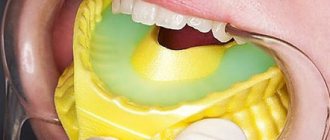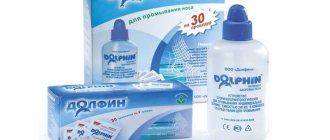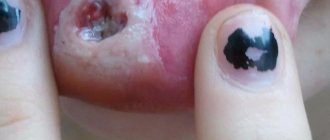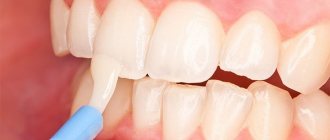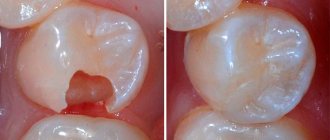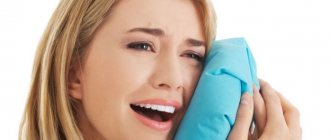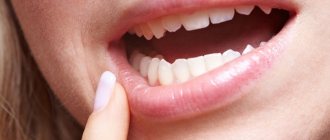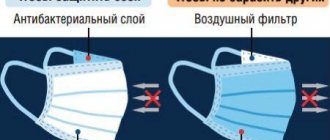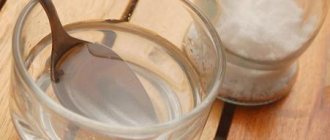Among wood processing technologies, one of the most interesting and exciting aspects is giving the workpiece strength and resistance to negative environmental influences. Traditionally, several treatment options are used at home - applying a protective layer and impregnation with conservation formulations. But as practice shows, such methods do not give much effect; after 2-3 years you have to correct coating defects and re-do the treatment. This state of affairs often prompts the search for new solutions to the problem of protecting wood products, for example, such a method as stabilizing wood at home.
How to stabilize wood at home?
So we come to the most important thing, namely a review of modern and popular polymer impregnations presented today on the Internet.
- "Anacrol"
This is an impregnating composition based on dimethacrylic polyester, which quickly polymerizes at a temperature of (95±5) ºС to form a thermosetting polymer. This composition was developed to seal micropores and microcracks, preventing internal corrosion in products made of ferrous and non-ferrous metals produced by casting or powder metallurgy.
However, high penetrating ability, non-shrinkage polymerization and the final properties of the resulting polymer, namely its high strength and chemical resistance, combined with operating temperatures from -60 ºС to +180 ºС, made the use of Anacrol-90 very interesting for the stabilization/preservation of wood .
- "100term"
This is a clear liquid stabilizing agent made from four thermosetting polymers with a simplified solid state reaction; a product created specifically for the highest quality stabilization of wood, horn and other natural materials.
100TERM is easy to use both within the walls of a professional laboratory and in an amateur workshop.
An effective non-toxic product for safe impregnation and stabilization (wood, textiles, paper, carbon fiber, fiberglass, leather, horn, fur, cones, corn leaves, etc.)
- "Buravid"
Polymer for wood stabilization. Private development. To be honest, we haven’t tried it at work yet. Implemented through the VK group, you can also see examples of stabilization based on Buravid there.
Abrasive polishes for cars
Abrasive car polishes contain substances such as chalk or clay. They sand the top layer of car varnish, removing a small amount of it, literally a few microns. This allows you to remove shallow scratches, abrasions, and stains.
Abrasive car polishes should only be used if you are confident in what you are doing. Because, unknowingly, you can erase the paintwork down to the metal, which will cause accelerated corrosion.
There are several types of polishing pastes with abrasive particles.
Companies selling professional car cosmetics offer entire lines of abrasive and polishing products, consisting of several bottles.
They must be applied in a certain order, and applied using polishing wheels of different structures. Therefore, for such polishing it is better to turn to professionals.
MORE Car care products
Polish for car interior plastic
How else can you stabilize wood?
There are a lot of options. You can use:
- any oils that can polymerize: flaxseed, poppy seed, nut, hemp, acacia;
- natural wax: beeswax, carnauba;
- boiling in coniferous resin;
- varnishes, drying oil, epoxy resin.
All of the compositions listed above will answer your question: “How to stabilize wood at home?”
The process that we will consider below is based on vacuum impregnation with Anacrol impregnating composition, and is also suitable for impregnation with other polymers and natural oils.
When choosing tools to clean your cast iron bathtub, avoid...
- Hard brushes.
- Sponges and brushes with metal.
- Fiberglass sponges.
- Blades and other auxiliary tools.
The ideal option is a moderately hard sponge or a regular brush with a handle .
Also today, housewives successfully use melamine sponges - but, for all their magical effectiveness, they remain extremely toxic when melamine enters the body, so the issue of their use remains controversial.
Let's move directly to the stabilization process
How do we know that in both cases the stabilization process was successful?
- Firstly, in case of successful impregnation, the bars must be completely immersed in the solution, i.e. drown in it.
For now they are floating freely with us)
- Secondly, we will control the quality of impregnation by control weighing of the bars before impregnation, after impregnation and after polymerization of the compositions.
- Thirdly, we will carry out the final stabilization process, namely drying and hardening of the polymer in different ways: in the oven and by cooking in boiling water.
Why does polycarbonate scratch?
At the same time, monolithic polycarbonate gets scratches much easier than any glass product, because plastic is a much softer material. A polycarbonate windshield, for example, can get scratched by sand, dirt, bugs and other road debris, leaving it cloudy. This gradually makes viewing difficult, especially in the sun. The same thing happens with work safety glasses, which are constantly bombarded by the working environment.
Rice. 1. A polycarbonate headlight clouded from microscratches and in need of sanding.
But there are improvised means and special products designed to remove microscopic scratches. They are available at most hardware and auto parts stores. Proper and timely cleaning and sanding of your polycarbonate will ensure its complete transparency for many years.
Go!
Our experimental material is four blocks of walnut. Input data:
- Bar No. 1: initial weight 122 g; stabilization in the composition of Anacrol (without dye); soaking in polymer without using vacuum equipment for 1.5 weeks; the final process is an oven at 100 degrees Celsius for 1.5 hours.
- Bar No. 2: initial weight 116 g; stabilization in the composition of Anacrol (without dye); soaking in polymer without using vacuum equipment for 1.5 weeks; the final process is cooking in boiling water at 100 degrees Celsius for 1.5 hours.
- Bar No. 3: initial weight 112 g; stabilization with Anacrol (red dye) using vacuum equipment; the final process is an oven at 100 degrees Celsius for 1.5 hours.
- Bar No. 4: initial weight 110 g; stabilization with Anacrol (brown dye) using vacuum equipment; the final process is cooking in boiling water at 100 degrees Celsius for 1.5 hours.
Why do we weigh bars? Not only to understand that the wood has absorbed the composition. If you plan to engage in commercial stabilization, then by weighing the bar “before and after”, determine how much of the impregnating composition it has absorbed, thereby obtaining one of its cost values.
For our purposes, we will use identical plastic containers, which we will number in accordance with the markings of the bars.
The most popular brands of remineralizing products
Remineralizing gel ROCS Medical Minerals
Remineralizing gel ROCS
is capable of restoring the mineral balance of enamel, strengthening teeth, increasing their resistance to caries. Teeth acquire an attractive appearance: they become brighter even without a special whitening procedure, and become less sensitive thanks to the microfilm formed on the surface of the teeth. Xylitol contained in the composition has an anti-caries effect, normalizes microflora in the mouth, and resists bacteria. The product does not contain harmful fluorine, so the gel is safe and suitable even for children. Recommended for people with contraindications to the use of fluoride.
Remineralizing gel Tooth Mousse
Tooth Mousse is a special cream (gel) for teeth, with the active component Recaldent, which restores mineral balance. Recaldent is an extract from cow's milk casein, which, when it enters the oral cavity, begins to affect enamel, soft tissues and even plaque. Calcium and phosphorus ions restore damaged enamel, reaching exactly those areas where they are lacking. That's why Recaldent was called “liquid enamel”. The Tooth Mousse product line includes gels with various flavors (vanilla, strawberry, mint...)
Remineralizing gel Global White Gel
A classic remedy for replenishing minerals in the structure of tooth enamel. Effectively reduces tooth sensitivity due to the content of potassium nitrate. D-panthenol helps prevent dry mouth and prevent inflammatory processes. Equipped with a special brush for applying gel to teeth.
Oleg Ilyashenko
Stage 2
1/ Soak bars No. 3 and No. 4 in Anacrol for 1 hour (let them get used to it)).
2/ Then we immerse them in a vacuum chamber and pump out the air.
3/ Vacuum until the end of the boil (about 30 minutes).
4/ Let stand at normal pressure for 30 minutes.
5/ Repeat processes No. 2, 3 and 4 two or three times. If everything is done correctly, then when the bars are completely impregnated, they should completely sink in the impregnating composition.
That's all for today. Tomorrow we will weigh the bars again, determine how much of the composition they have absorbed, and also move on to
Hammer enamel. Self-cooking.
The enamel for applying the background layer consists of varnish (UVL-3) - 94% and aluminum powder (PAK-3 or PAK'4) -6%. The enamel for applying the decorative layer is prepared according to the following recipe: varnish UVL-3—90—92%, aluminum powder (degreased in xylrl)—6%, enamel U-422 or U-421—4%, silicone oil (pattern former) 4— 5 drops per 100 g of enamel working solution or 0.1-0.2%. Decorative paint consumption is 200-250 g/l2.
To obtain different shades of painted surfaces, colored urea-formal-dehyde enamels UE are added to the decorative paint composition. The pattern former is introduced into the decorative paint immediately before starting work, since its viability after introduction into the enamel is 2-3 hours. Enamels without a pattern former can be stored for 2-3 months; If the enamel thickens, mix thoroughly and filter.
B. Drying time for the background layer at a temperature of 100-120° is 1 hour, for the decorative layer after developing the design - 1-1.5 hours.
Hammer enamels are produced in pilot batches by the Krasnopresnensky paint and varnish plant of the Moscow (city) Economic Council.
The preparation of hammer enamels is not difficult and can easily be organized in a factory setting. Composition of hammer enamels:
1) UVL-1 or UVL-3 varnish - 93.5 -96.8%, 2) aluminum powder - 3-6% and 3) soot - 0.2-0.5%.
The initial varnish UVL-1 should have a viscosity of 8-12 sec (according to the NILK funnel) at a temperature of 18-23°. With an increase in the content of aluminum powder, the “pattern” of the enamel decreases. With an increase in the amount of soot, the enamel acquires a darker shade, and the pattern becomes more prominent.
The enamel components are loaded into a tightly sealed tank with a mechanical stirrer. Stirrer speed up to 200 rpm. After three hours of mixing, a stable suspension of powder and soot in the varnish is formed. As a result of processing, the fatty film on the surface of the aluminum powder flakes dissolves and the powder loses its ability to float to the surface.
To change the color, up to 30% of colored enamels can be added to the prepared enamel; UZ-11 light green, UE-13 green, UZ-16 blue and other colors.
Immediately before painting, when the hammer enamel is poured into the paint sprayer, add 2-5 drops of silicone oil or GKT product to it and mix. As a result of the addition of this additive, suspended particles fall out of the suspension. A pattern is created on the surface to be painted.
How to polish monolithic polycarbonate manually
Sanding car headlights is one thing, but removing scratches from polycarbonate glasses lenses is another. In different cases, more or less subtle work is required to remove “microtraumas”.
Let us list step by step the algorithm for cleaning and fine grinding of transparent polycarbonate using the example of a windshield. Acrylic and plexiglass can also be easily sanded using this method. This homemade recipe can be seen on almost every life hacks forum from “do-it-yourselfers.”
Step 1
Cleaning a polycarbonate windshield. Do not use glass cleaners that contain alcohol or ammonia. They are harmful to polycarbonate. The safest cleaner is warm water and mild, non-abrasive soap or dish soap.
If there are stuck and dried insects on the surface, they cannot be scraped off, but should be soaked and then washed off. It is best to use a wet towel for soaking, which should be hung on the glass for a few minutes.
If the polycarbonate is completely cloudy, then the first step after washing should be abrasive grinding with the finest sandpaper, the so-called. “zero” or P2000. Sanding is carried out strictly on a wet surface! Plain water is used for wetting.
Step 2
After rough sanding, apply a fine sanding compound, such as 3M polishing paste No. 75, which is sold at any auto parts store. With its help, microscopic marks are erased after rough sanding.
Just make sure that the product you use is a fine abrasive that is chemically safe for plastic. Toothpaste is an excellent choice for this role. For processing, use a soft, clean cloth, preferably wool. In this case, the hand should move in a circle.
Step 3
Remove the sanding compound with warm water and soap. If it is dry, attempting to wipe it off without wetting the surface may result in new small scratches.
Step 4
Apply a non-abrasive polishing compound. Again, use a special polycarbonate polish that is safe for plastic. Choose a better polish with wax. It has long been used to obtain a glossy shine on parquet floors and other surfaces. This can be a wax-containing polycarbonate polishing paste or a liquid product. Thanks to it, insects and dirt in general stick to the windshield much less.
Warning!
Do not clean or wipe the windshield with paper. It is rough and scratches polycarbonate. Wipe it only with a soft cotton or microfiber cloth.
Items you will need:
- Soap or dish soap
- Water,
- Microfiber cloths,
- Sandpaper,
- Grinding compound,
- Polishing compound (with or without wax).
How simple grinding of polycarbonate safety glasses is done is clearly shown in this video:
